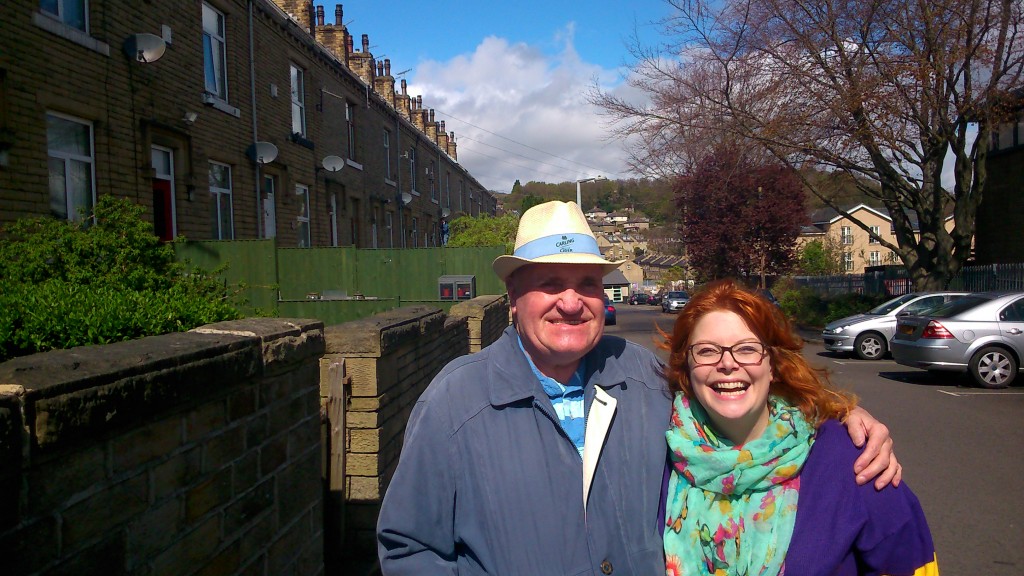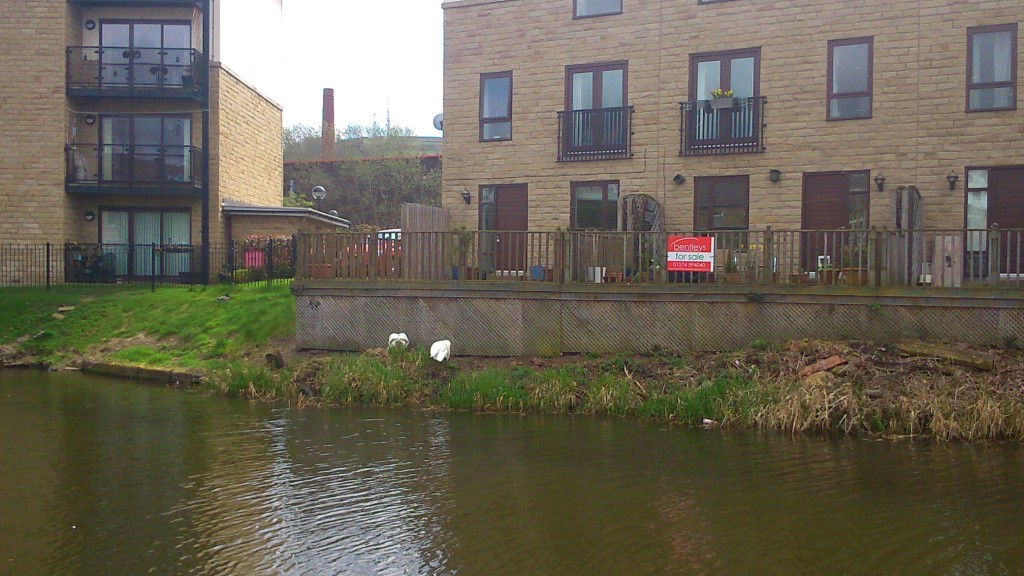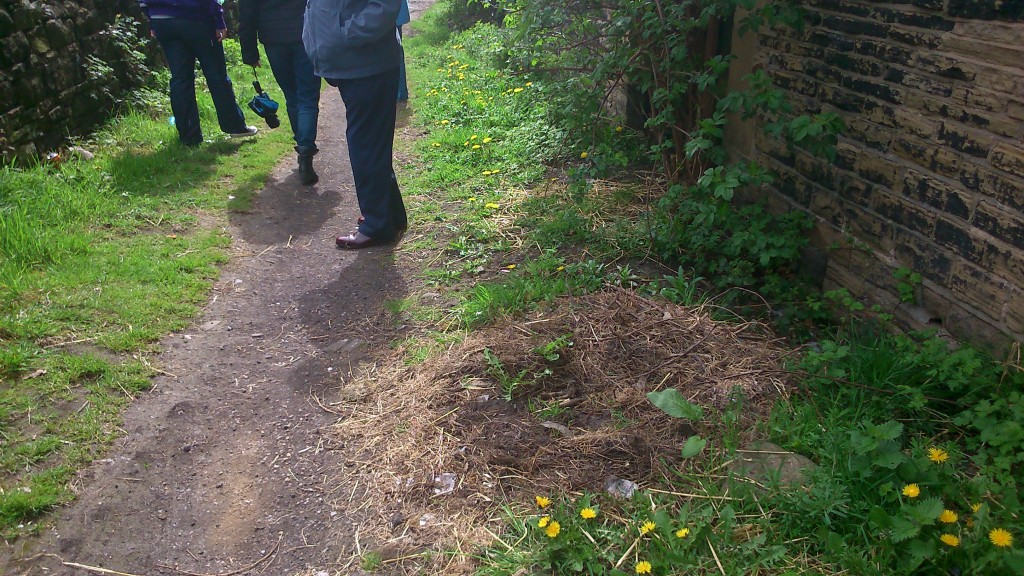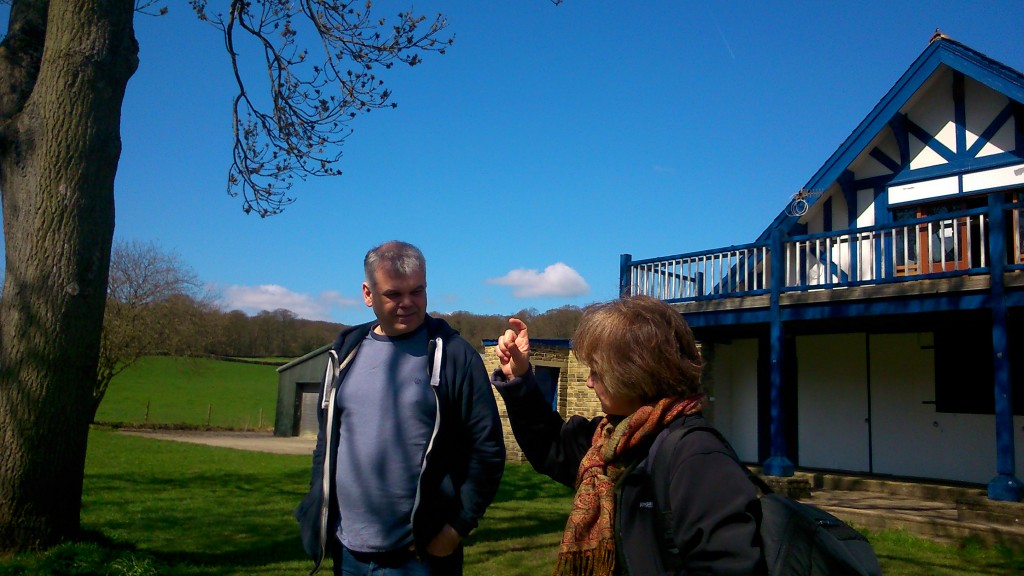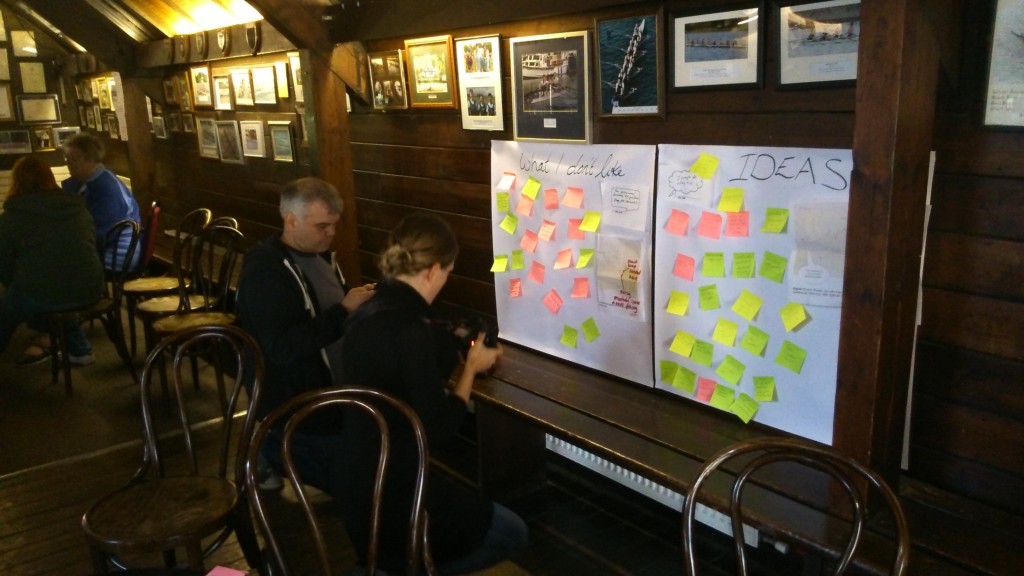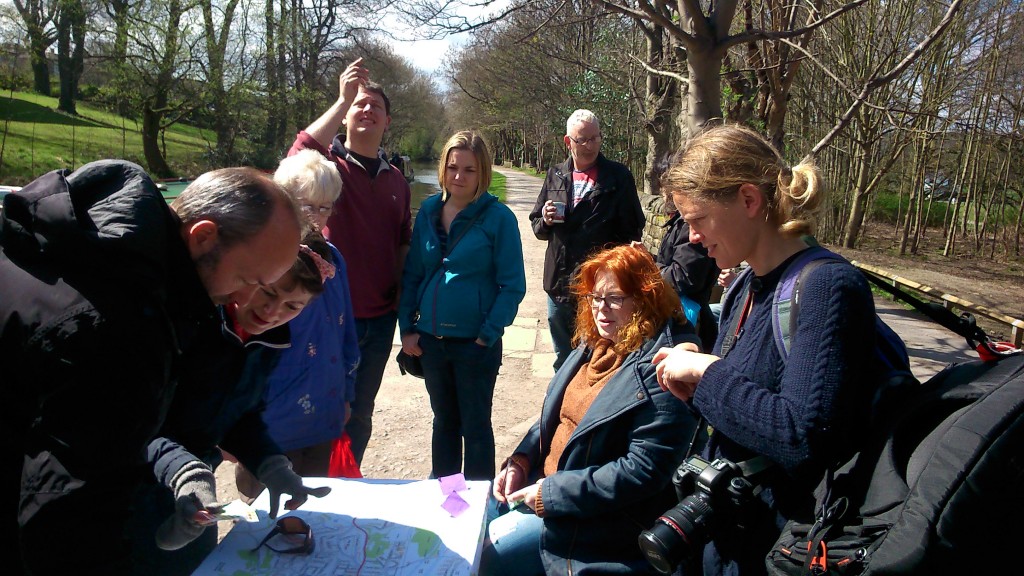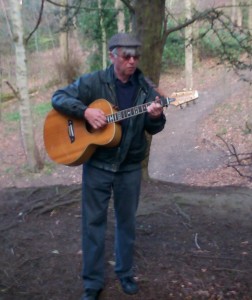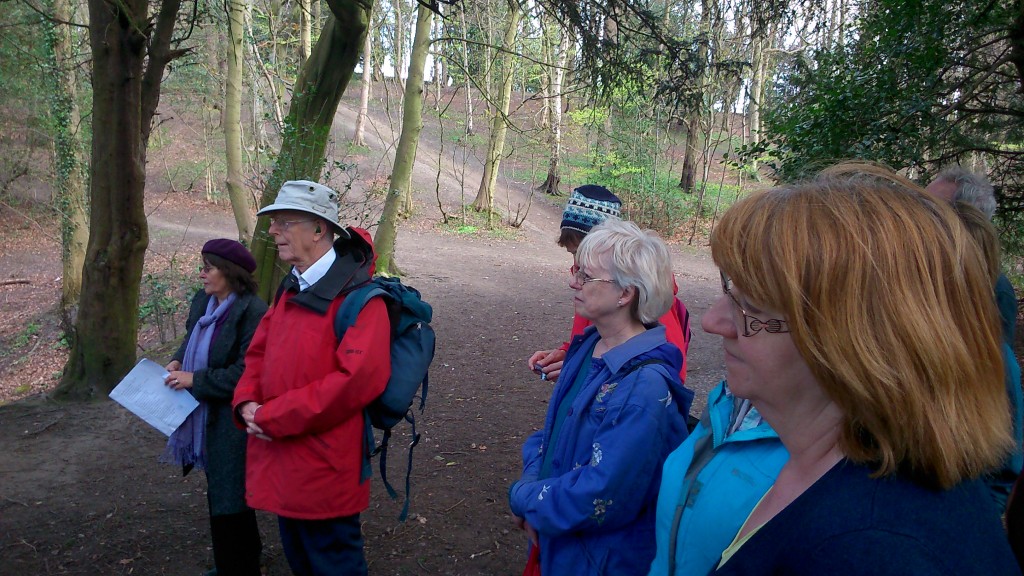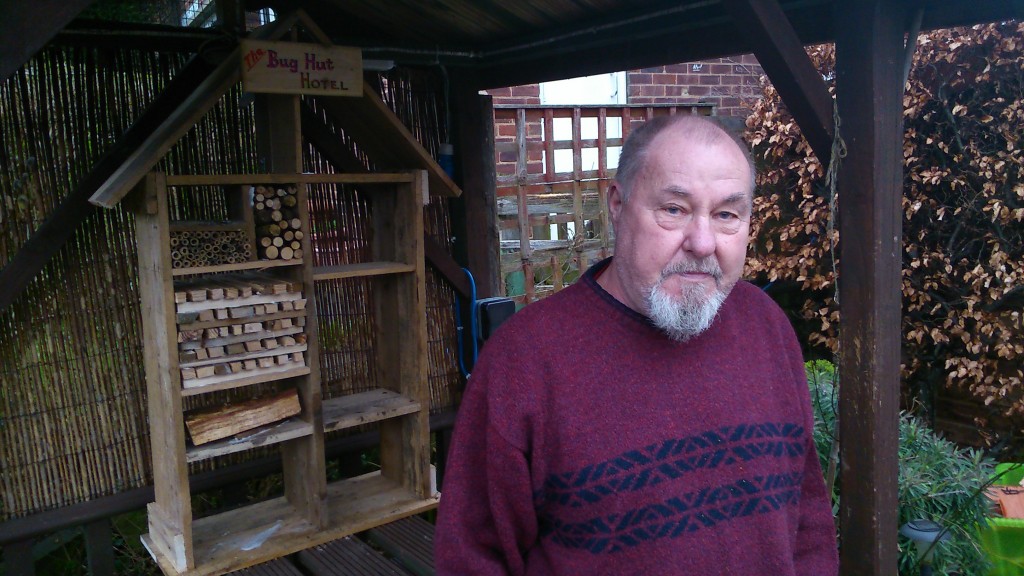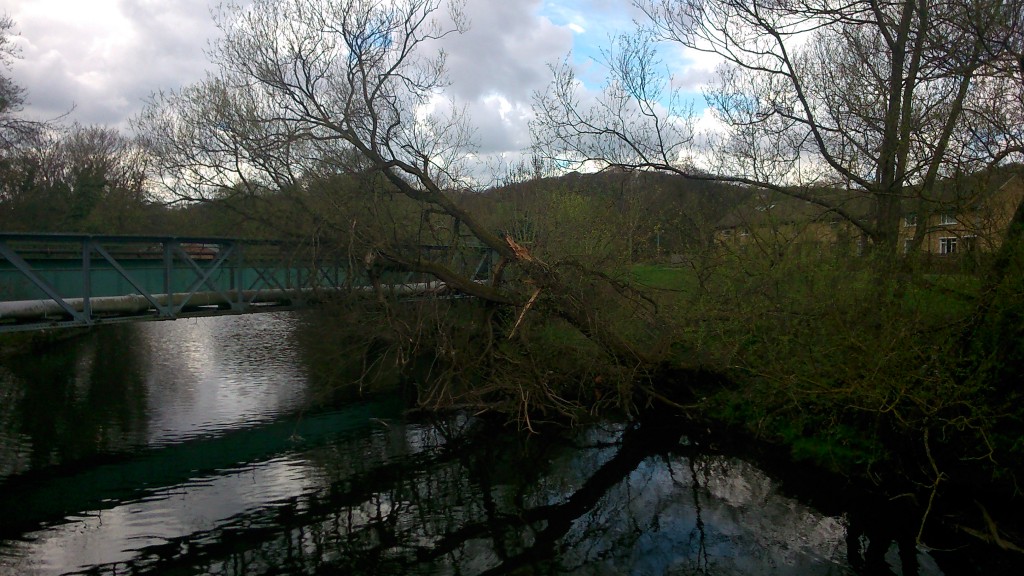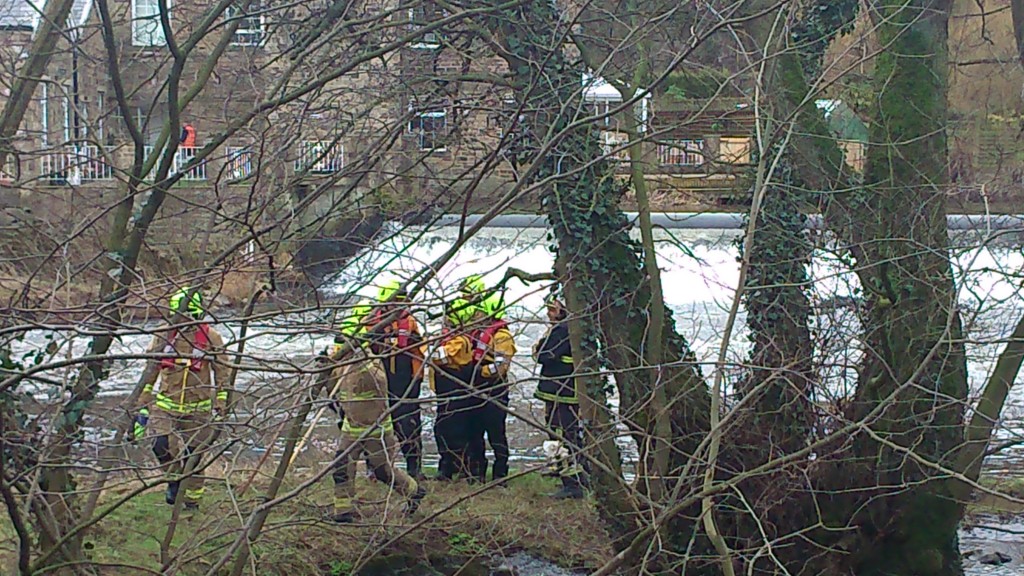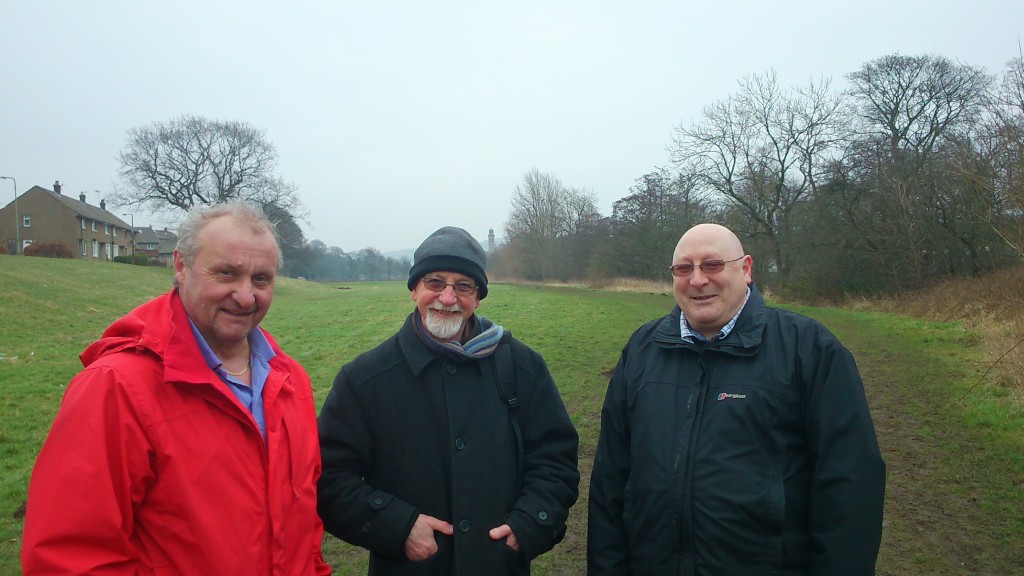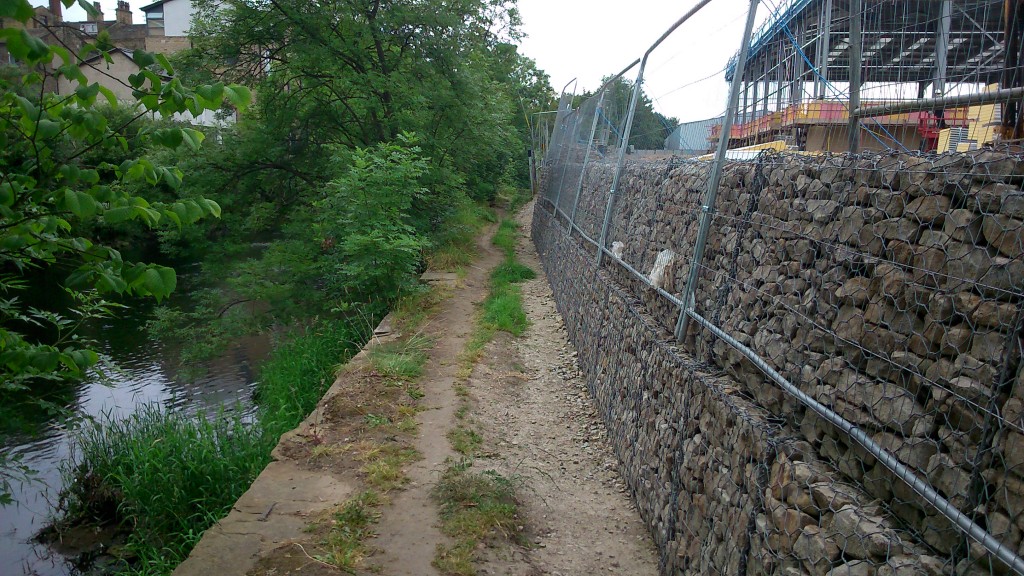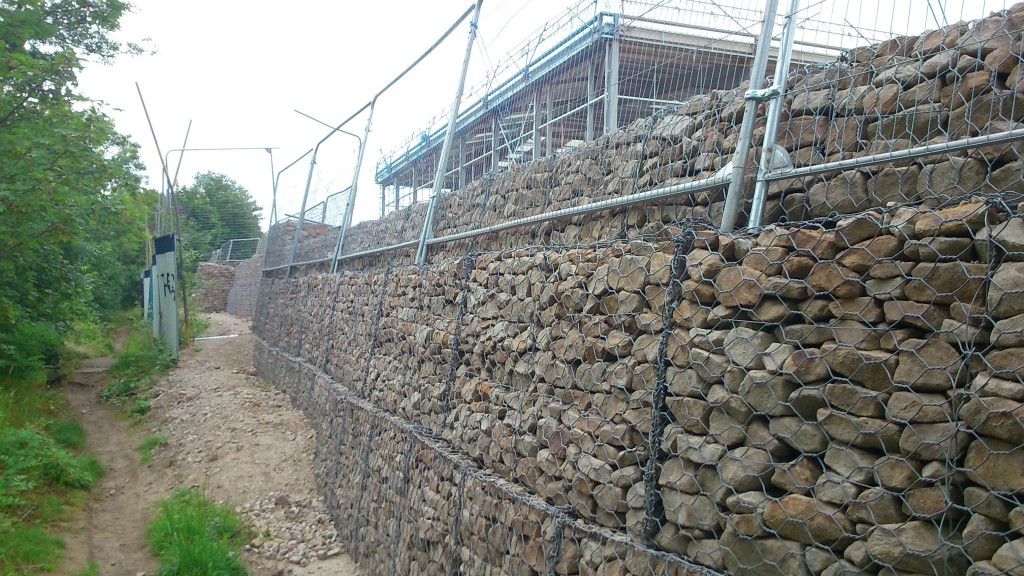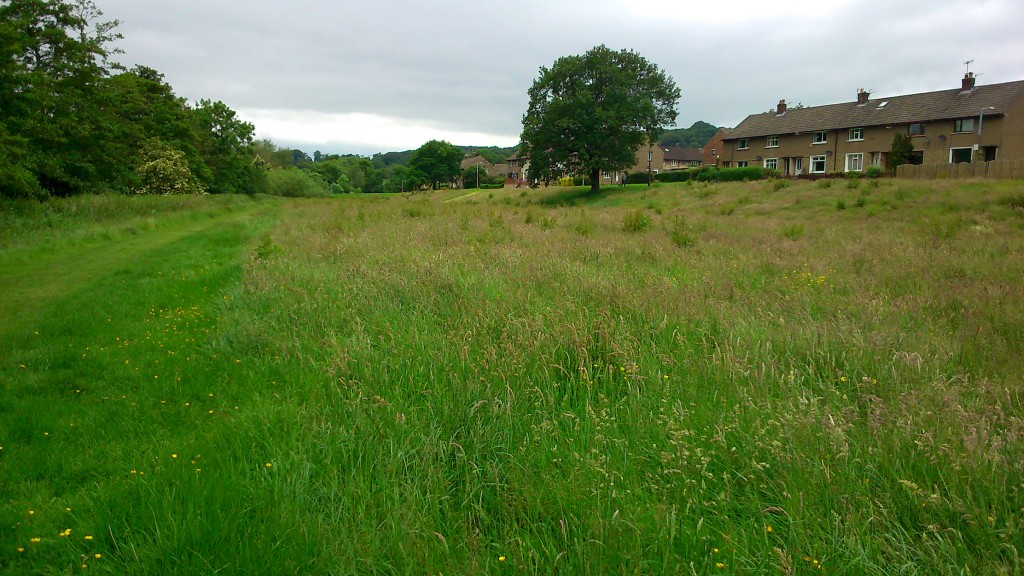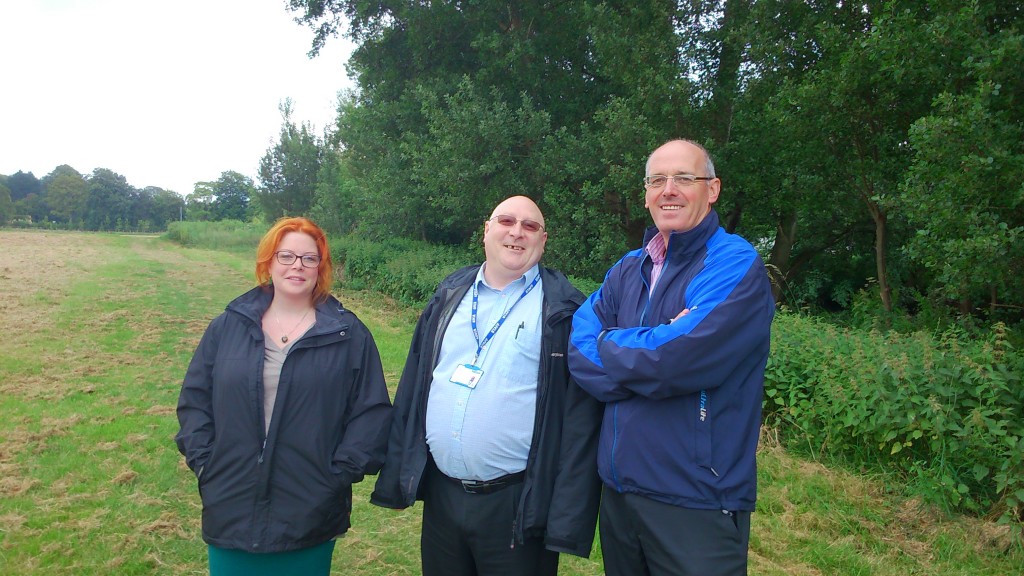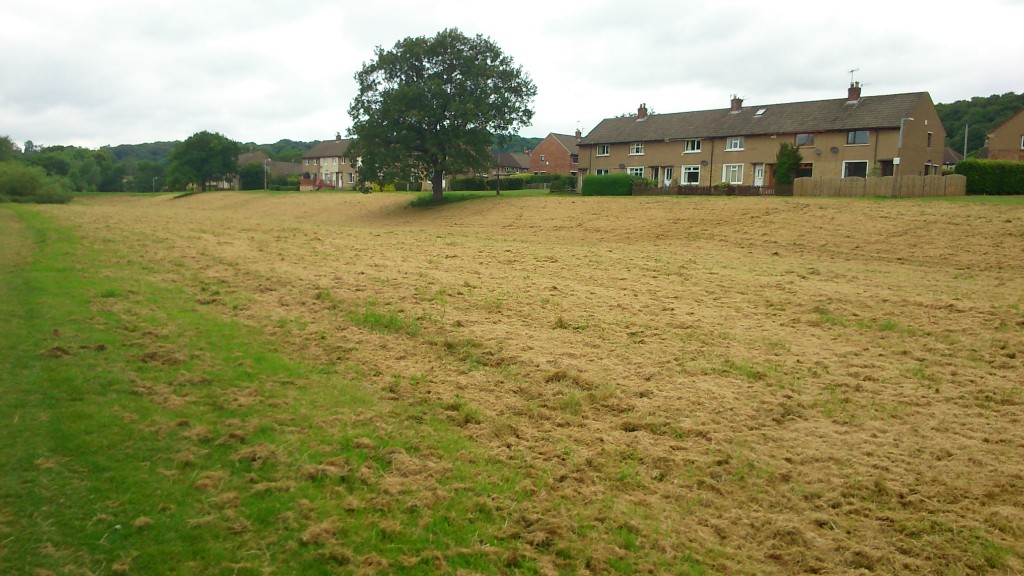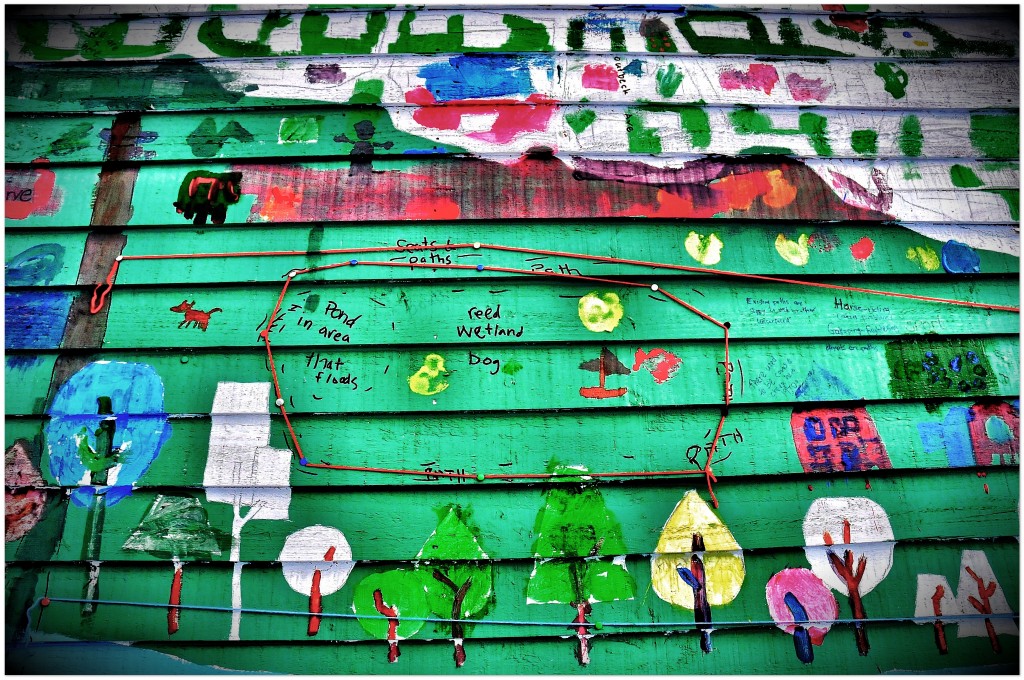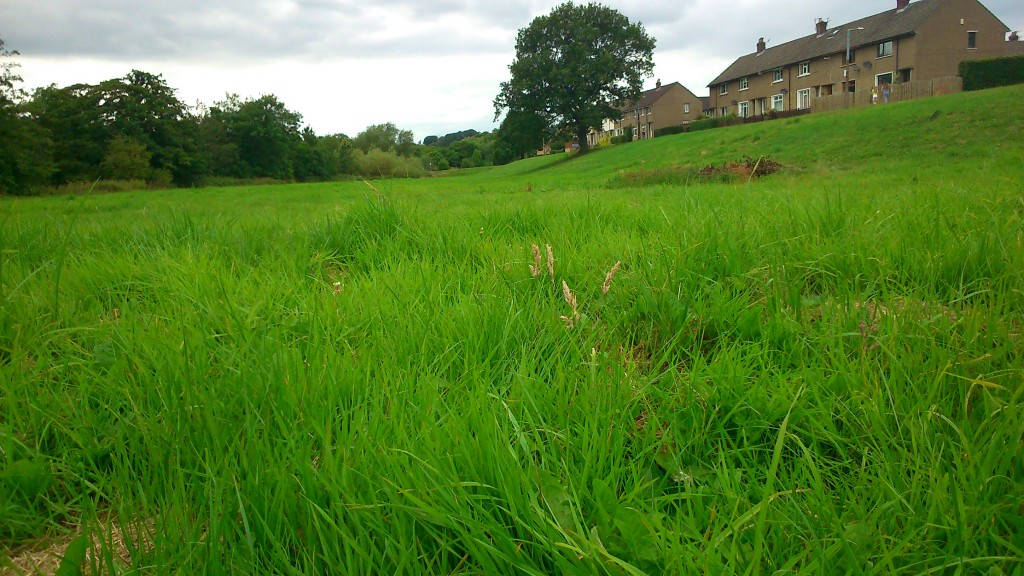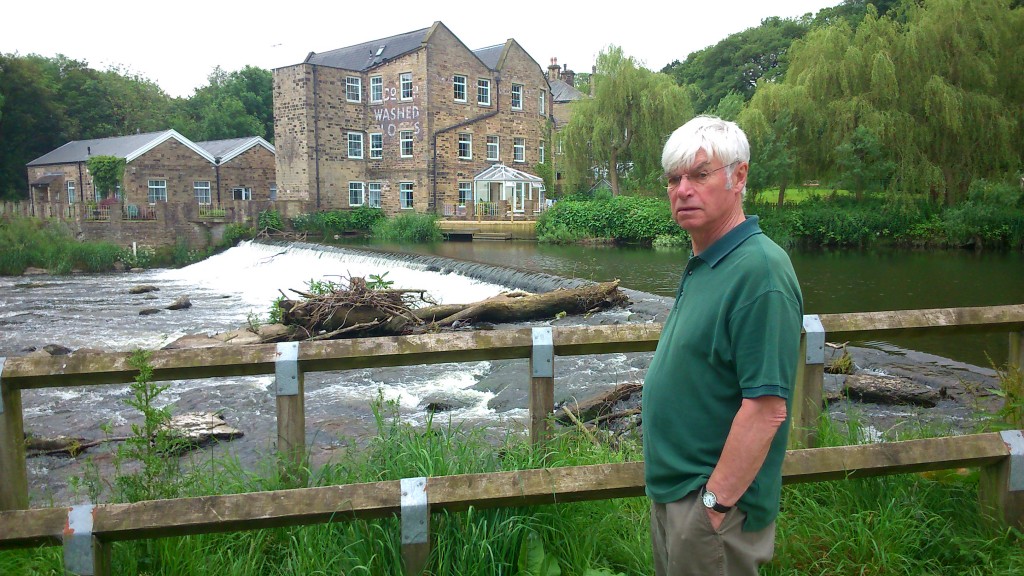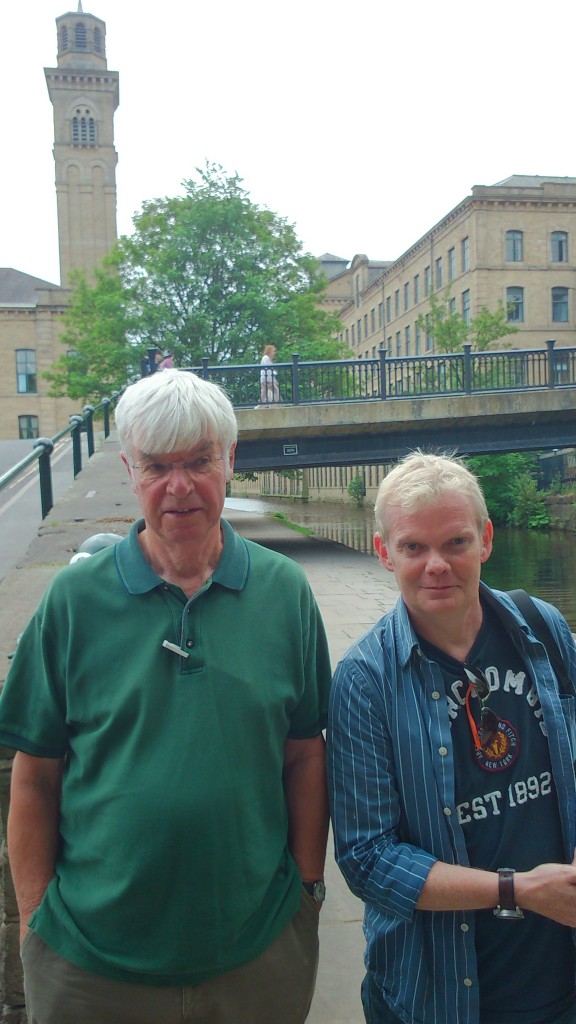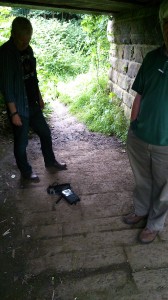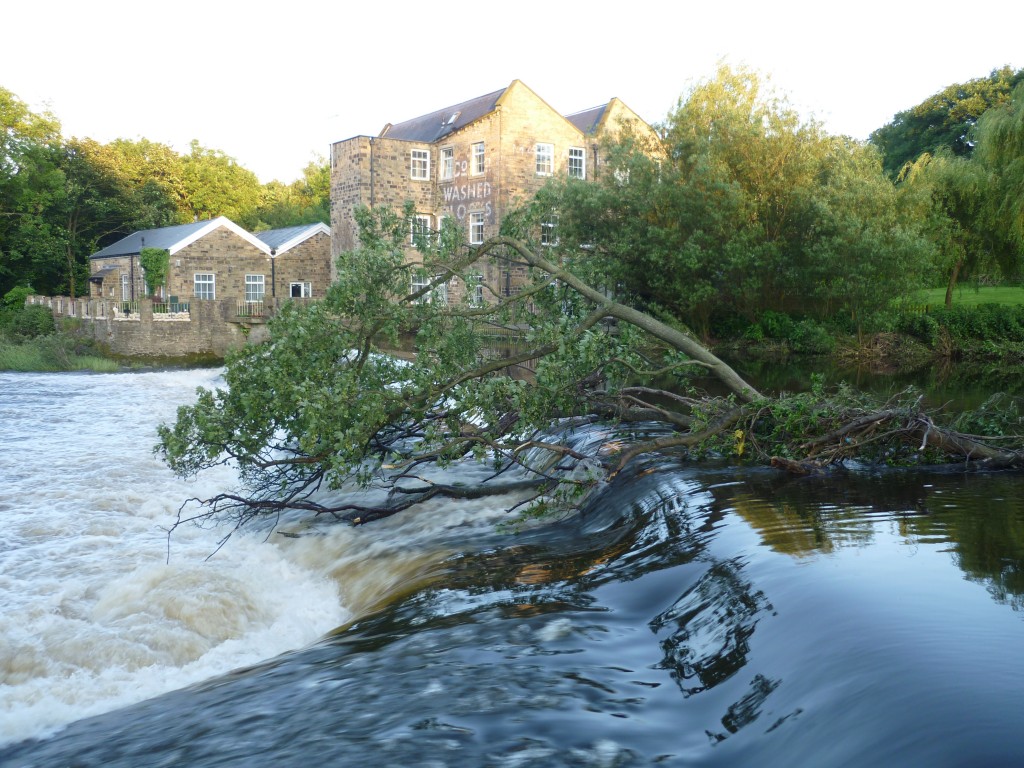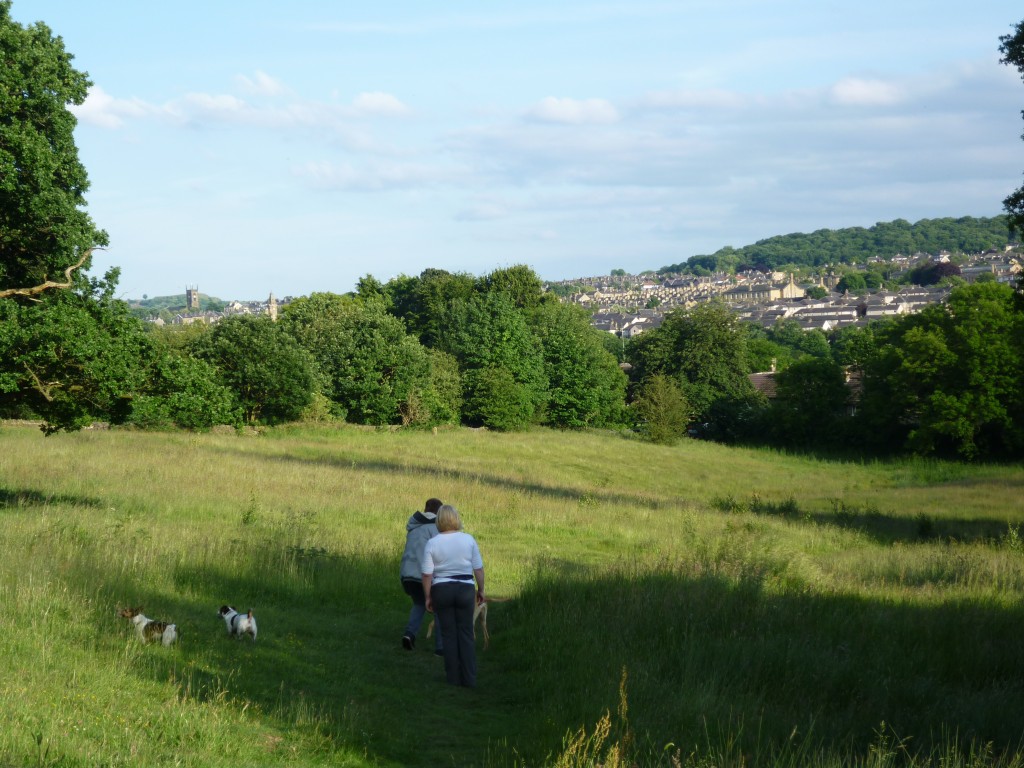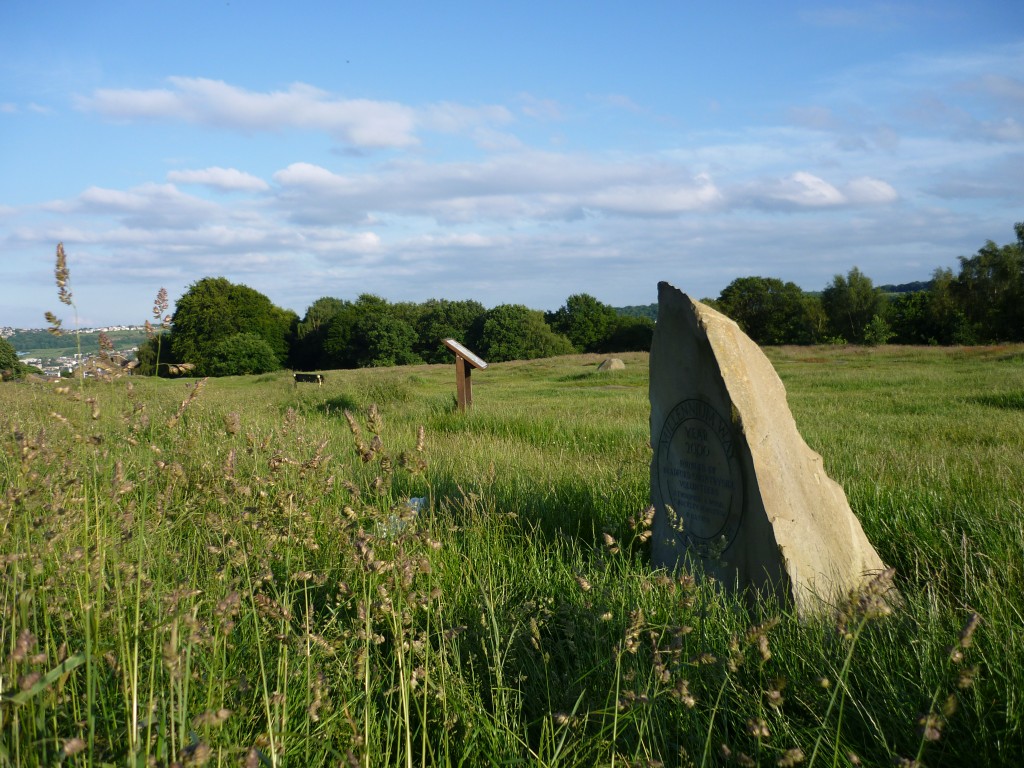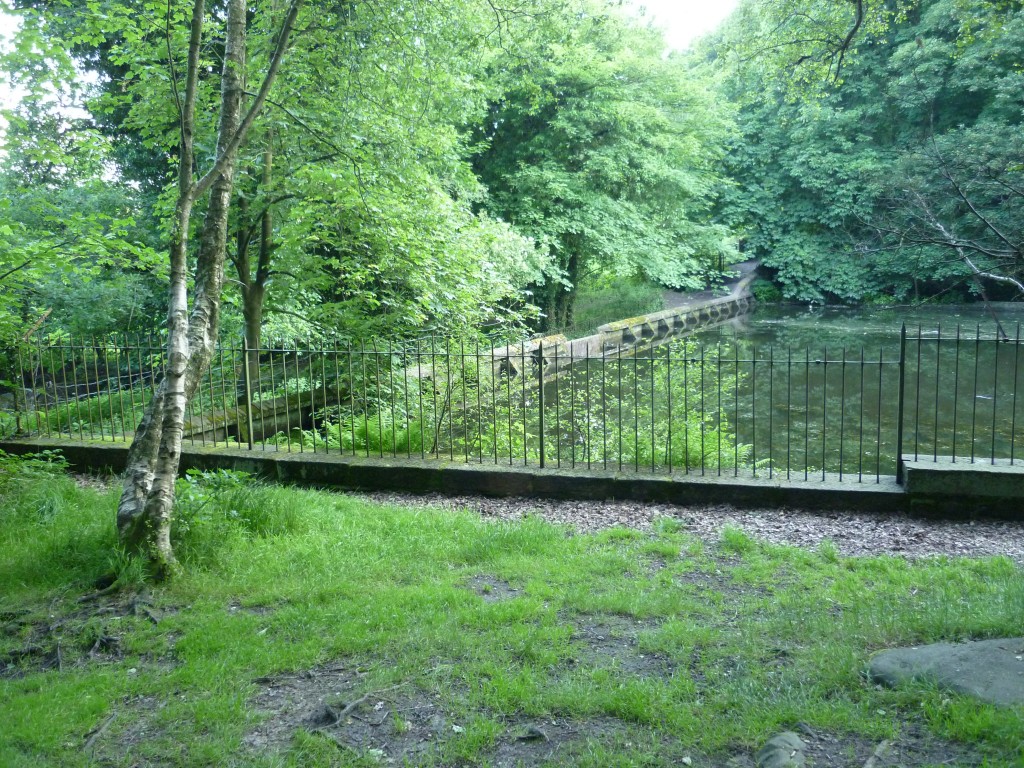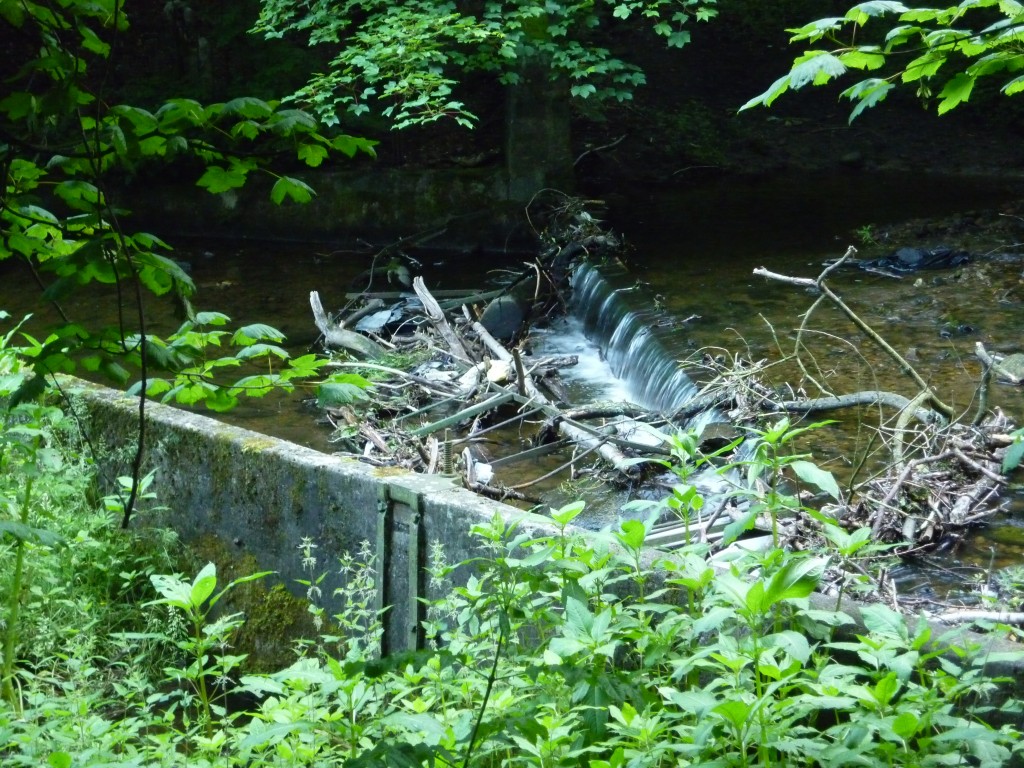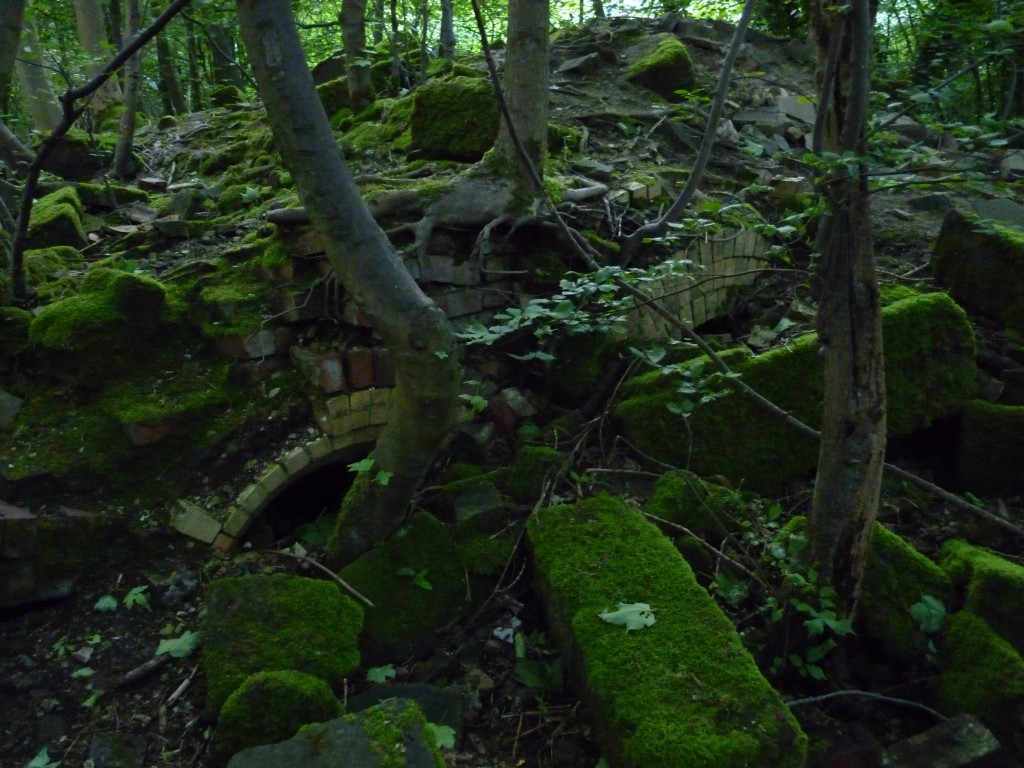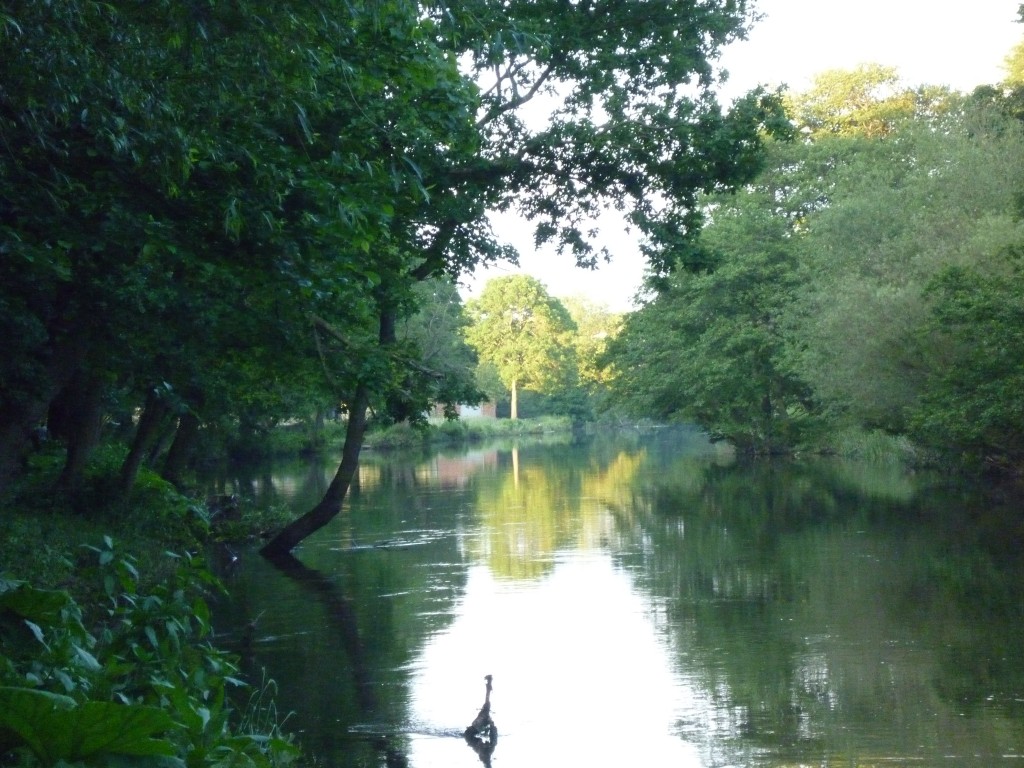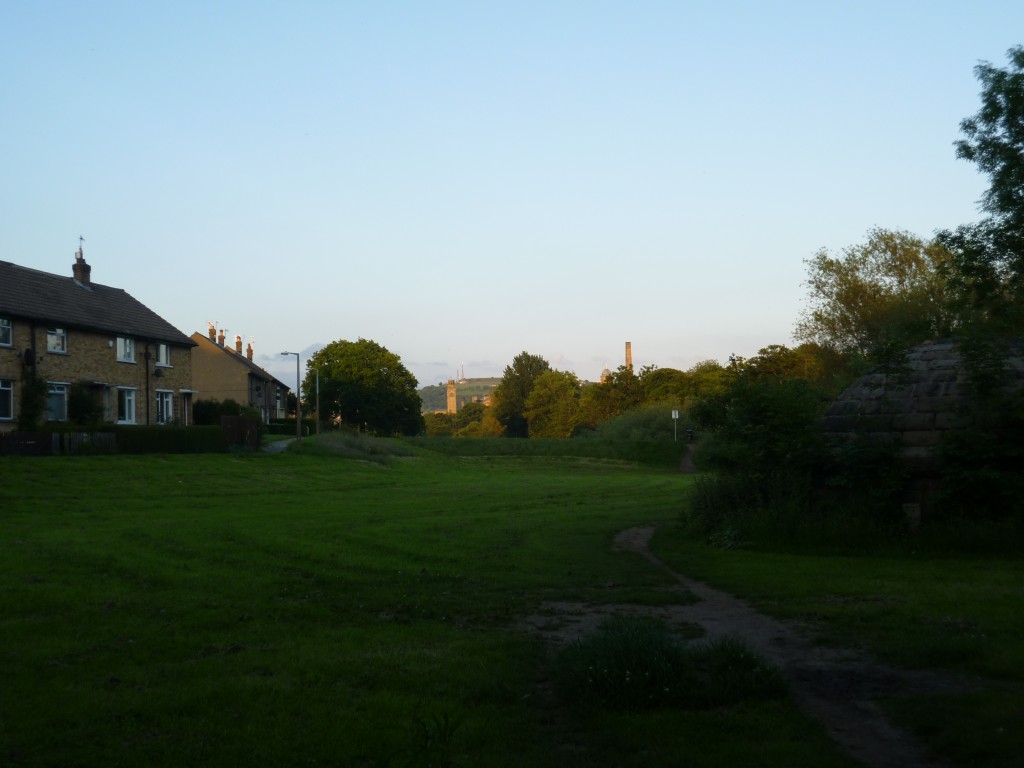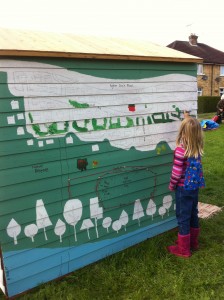 On Saturday 22nd September, in conjunction with our Green Route tour of Roberts Park and the Higher Coach Road estate, we held a community-facing event aimed at generating further discussion among residents of the estate about the past, present and potential futures of this riverside housing development.
On Saturday 22nd September, in conjunction with our Green Route tour of Roberts Park and the Higher Coach Road estate, we held a community-facing event aimed at generating further discussion among residents of the estate about the past, present and potential futures of this riverside housing development.
The event was themed as “the Higher Coach Road beach party” – playfully referring to the “sandy bank” that older residents recall kids playing on in the estate’s early years before the footbridge towards Hirst Lock was built in 1962.
 A small collection of “beach huts” was erected at the bottom of Bowland Avenue, facing the river (we wanted to put them on the green flood plain area, but it was a bit too boggy that day), and representatives from Bradford Council, the Environment Agency, and the Aire Rivers Trust were on hand in the huts to answer residents’ questions and register their concerns. There were also kids’ activities (including a bouncy castle, craft activities, etc.), a fish-and-chip stall, and a community mapper working with residents to explore how they see the area and what they might like to see in future…
A small collection of “beach huts” was erected at the bottom of Bowland Avenue, facing the river (we wanted to put them on the green flood plain area, but it was a bit too boggy that day), and representatives from Bradford Council, the Environment Agency, and the Aire Rivers Trust were on hand in the huts to answer residents’ questions and register their concerns. There were also kids’ activities (including a bouncy castle, craft activities, etc.), a fish-and-chip stall, and a community mapper working with residents to explore how they see the area and what they might like to see in future…
 A number of residents wanted to argue for a “Denso’s”-style wetland nature reserve being established on the habitually boggy green space between the river and houses. This might be a good idea both from a ‘biodiversity’ point of view (there’d be still more wildlife for residents to appreciate) and a ‘flood storage’ point of view (wetlands hold water better rather than allowing it simply to run off towards the already over-full river in high water conditions). On the other hand, though, some residents were concerned that making a wet area still wetter, in close proximity to housing, might be a safety concern for families with children etc. This debate about possible futures was lively and (as you can see) well-illustrated!
A number of residents wanted to argue for a “Denso’s”-style wetland nature reserve being established on the habitually boggy green space between the river and houses. This might be a good idea both from a ‘biodiversity’ point of view (there’d be still more wildlife for residents to appreciate) and a ‘flood storage’ point of view (wetlands hold water better rather than allowing it simply to run off towards the already over-full river in high water conditions). On the other hand, though, some residents were concerned that making a wet area still wetter, in close proximity to housing, might be a safety concern for families with children etc. This debate about possible futures was lively and (as you can see) well-illustrated!
Yet another of the “beach huts” was designated as the Higher Coach Road History Hut, and featured exhibits showing old plans for the area, from the West Yorkshire Archive Service, and a summary of what we’ve learned about the estate’s history from (a) the archive and (b) the memories of longer-term residents. In response to various requests to make this material avaialable, the key points from this historical work are re-presented below…
 1. Shipley, Baildon or Saltaire?
1. Shipley, Baildon or Saltaire?
The Coach Road estates were built in the 1950s by Shipley Urban District Council, on Baildon land, that had been purchased from Salts of Saltaire Ltd. During the 1860s, pioneering mill owner Titus Salt had bought up huge tracts of land on the north side of the Aire, but apart from establishing Roberts Park, and laying down Coach Road (which led to his sons’ houses at Milner Field, to the west, and Ferniehurst, to the east), he did little with it.
The inheritors of Salts Mill still owned all this land until after World War II. The company even drew up unrealised plans for a huge housing estate, to be known as the “Milner Field Estate”: this would have involved chopping down most of the trees in Hirst Wood, Shipley Glen, etc., in order to build on the cleared land. However, the imagined scheme never got the go-ahead.
In the period immediately following World War II, the Labour government created the modern welfare state: Aneurin ‘Nye’ Bevan, as Minister for Health, was the architect of the NHS, but he also laid the foundations for the creation of local council housing estates (as opposed to privately owned housing estates, like the one Salts had planned). In 1952, responding to the West Riding County Planning Department’s call for new council housing in the Shipley area, Shipley Urban District Council announced its intention to buy and build on the plots of riverside land on either side of Roberts Park.
The planned new housing was intended primarily for residents displaced by the demolition of “slum” housing in Shipley town centre, Windhill, and other local areas. Shipley’s plans included building in three distinct areas. Zone 1 was the area east of Roberts Park, between Thompson Lane to the north and Coach Road to the south. Zone 2, the largest section, was the area to the west of Roberts Park, now known as the Higher Coach Road estate. Zone 3, the smallest section, was the area to the south of Coach Road on the east of the park (i.e. the housing on Tennis Way and Aire Way).
2. Baildon Council opposes the estate
All of the land in question lay within Baildon parish, and Baildon Urban District Council objected to Shipley’s plans on multiple grounds — particularly the plan to build in the previously undeveloped Higher Coach Road area. According to a June 1952 summary report from the Ministry of Local Government and Housing (in London), Baildon Urban District Council objected to Shipley building on this land for the following reasons (quoted verbatim from the document):
- That the scheme is extravagant.
- That the [road] bridge at Salts Mill would have to be reconstructed.
- That the amenities of the Coach Road area, including Shipley Glen, would be destroyed.
- That the site is water-logged.
- That there is suitable alternative land in Shipley for the development in question.
Shipley successfully argued against these objections, and the Minister permitted development to go ahead, provided the natural amenities of this green-belt area were respected (see 4 below). However, a memo from the West Riding County Planning Department dated December 1951 suggests that Baildon’s real objection to the development was more fundamental:
“Baildon Council objected to the definition of land in Coach Road district for residential use, as the implication was that any large scale development would be to re-house population at present resident in Shipley.”
In other words: Baildon did not want residents from Shipley’s so-called “slum” housing living on Baildon land! However, once the scheme was approved by the Minister, Baildon began to argue for many more houses to be crammed into this area. Why? Apparently so as to head off Shipley’s stated intention of buying more Baildon land, this time in the West Lane area. This would have placed council housing much closer to the centre of Upper Baildon. Baildon Council made clear that they were hoping “that a more spacious type of development would take place [in this area] than that associated with a Council Housing Estate.” But this meant them advocating less-than-spacious developments in the Coach Road area, cramming in as many people as possible, so as to ensure that Shipley did not need more space up the hill.
3. Salts wrangling with Shipley…
Salts of Saltaire Ltd. were initially reluctant to sell their riverside land to Shipley Council, apparently because they were hoping to get a better price than the one being offered. To maximise the perceived value of the land sale, the company attempted to package in the Victoria Road Bridge at Saltaire. Salts argued that the housing estates would necessarily need road access across the river at Victoria Road. They also hoped that Shipley Council would take responsibility for fixing the bridge, which had been damaged during the war (tanks made at Butterfields in Shipley had repeatedly been driven across it to be tested on Baildon Moor, destabilising the 19th Century structure). Shipley commissioned a survey report which established that the bridge “was incapable of being made good at a reasonable expense.” Understandably, they refused to buy it, and so it was at this point that talk began of a new footbridge being built into Roberts Park (i.e. the current one). The road bridge was later demolished.
With Salts continued to drag their heels about a sale, Shipley applied to central government for a Compulsory Purchase Order. This would have forced Salts to sell the land at the District Surveyor’s valuation of just £5,800, which was significantly below what Shipley was offering! (The documentary evidence suggests that the surveyor’s office co-operated with the Council on this point…) Caught in a pincer movement, Salts decided to sell before the CPO could be enforced – and thus stated that they “could not accede to the request [from Baildon Council] that they should oppose the Development Plan.”
To avoid maximise the sale proceeds, Salts now proposed to sell off Shipley Glen and other wooded areas along with the land Shipley wanted for housing estates. Shipley agreed to the package, and bought the whole lot for £8,160.
4. Respecting the Natural Environment
In 1952, when the Minister for Local Government approved Shipley’s application to build on the riverside land (see 2 above), he specified there should be “no residential development carried out between Coach Road and the base of the wooded hills on the more westerly side.” This was a concession to Baildon’s stated concerns about protecting the “natural amenities” of this greenbelt land, and it forced a change of plans by Shipley. Their original lay-out for the planned Higher Coach Road estate involved building on Trench Meadow — land now preserved as a Site of Special Scientific Interest (so the Minister seems to have been well advised!).
To their credit, rather than simply tweaking the existing layout plan, Shipley went back to the drawing board – and sought the advice of the Housing Ministry’s Regional Architect, Mr. Williams (based in Leeds). In September 1953, following this consultation, Shipley unveiled a new layout – the one eventually adopted – which consciously sought to be sympathetic to “the pleasant rural atmosphere of the area.” So for example, the plan was to preserve open green space between the fronts of houses, rather than having the estate dominated by tarmac. Instead, car access was to be tucked away almost invisibly onto service roads leading to back doors.
As the Council’s planners noted, “the amended lay-out takes a rather novel form” – so novel, in fact, that “there are, unfortunately, no local examples of this type of development which [council] members could inspect” (in order to form their own judgement). And yet, stated the same document, “It will be noted that a very pleasing, spacious type of development is obtained which will go a long way towards minimising any harmful effect of housing development on the amenities of this particular area.” For those concerned about budgeting, it was noted that less road-building also meant “a reduction in roadwork costs per house.”
The down side was that, “inevitably there will be a reduction in density of accommodation”. That is, the carefully spaced, grassy layout at Higher Coach Road would mean that the numbers of houses to be built was considerably less than was being demanded by both West Riding Planning Department and Baildon Council (see above). However, given the role played by the Regional Architect of the Ministry of Housing in the revised scheme, there was little point in objections being put to the Ministry…
Shipley’s new commitment to blending their housing plans in with the natural environment consciously resisted the “stack ‘em high, pack ‘em deep” thinking that was common in much council housing planning in the 1950s — as was typified by building high-rise blocks of flats in other areas. Today, in 2012, many of those flats have long since been knocked down or blown up, but in the Coach Road area some of the residents who moved in during the 1950s are still living there. They have never wanted to leave this well-designed estate.
5. Building on Marshland
The land on which the Higher Coach Road estate was built is composed of soft, alluvial soil (silt deposited by the river over centuries). From the start, it was recognised that these were “Abnormal Site Conditions” for building on. The land nearest the River Aire, most prone to flooding, was left free from development, but even the higher ground was a problem. As a Shipley Council memo from 1952 noted, “surface water is liable to cause difficulty during construction and there are a number of surface springs.”
Extensive earthworks were required in order to drain the land, and to even out the undulating hills of alluvial soil. Some of the ground was flattened down, and other parts built up in order to create the largely even ground at the top of the flood embankment that we see today. Interestingly, the earthworks contract with the contractors, L.J. McCarthy, specified that they would be paid by the ton for shifting and removing soil and rock, but exempted loose boulders of “less than 3 cubic feet in size”. These were a common feature of the area: smooth, round boulders littered the area, and had probably been left behind by the movement of the glacier that had made its way down the Aire Valley during the last ice age! Since these boulders were already loose rock, Shipley saw no need to pay the contractors to move them, but as a result, the first residents moving onto the estate found them still littering the green areas! Some got buried, others did eventually have to be broken up and removed.
The houses built on this soft land had no basements. Concrete piles were driven into the ground as corner supports, but the weight of the houses had to be distributed across their surface area so as to minimise the risk of them tilting (the Leaning Tower of Pisa leans because it concentrates too much weight on soft, alluvial ground!). The floors of the houses are made of concrete slabs, or “rafts” – about 4 inches thick – which simply sit on a prepared bed of hardcore, and are topped by a layer of asphalt/bitumen (visible under people’s carpets!). The raft design helps spread out the weight of the houses, allowing them – in effect – to “float” on the soft surface of the land.
The houses on the Higher Coach Road estate were built by Shipley Direct Labour Force – a multi-skilled task force put together by the Council – in the years between 1956 and 1962. According to archival records, the total building costs came to £386, 515.
6. When is a garden not a garden?
The original design of the estate made no provision for front gardens. Residents were to have back yard or garden spaces, but between the fronts of the houses there was to be open, communal green space (the grass was originally kept long, as a kind of meadowland, in keeping with the previous character of the area). From the outset, Shipley Council was aware that “some adjustment in outlook and living habits on the part of tenants will be called for” in order for this sharing of communal spaces to work in practice. It appears, however, that nobody thought to explain this to the new tenants!
In 1956, very first new residents on the estate moved in, on Park Way and Windermere Avenue, at the east end (the rest of the streets were still to be built). And by September of that year, the tenants had already begun requesting permission to erect fences separating their “front gardens” from the estate’s footpaths. This was because “sheep who have been used to grazing on this ground still wander over the gardens,” and were eating any plants and flowers sown in them.
Shipley Council responded by insisting that planting out should be reserved for people’s back gardens: “the houses facing greenswards should not have fences or hedges which would spoil the open aspect intended to be achieved.” In short, there were no front gardens: the areas between the houses and the footpaths were intended to be treated simply as grass verges, consistent with the central meadow spaces. At the same time, though, the Council had to acknowledge that some of the new residents had “put a considerable amount of work into their gardens” (even though they weren’t supposed to be gardens…).
The Council attempted to solve the problem by penalising the local farmers who were still allowing sheep to graze on the estate. They wrote to farmer J.H. Denby, for example, to inform him that “complaints are now received at the Town Hall on an almost daily basis”, and that “whatever steps your shepherd informs you he is taking appear to be almost entirely ineffective.” Despite these efforts, though, complaints about sheep and horses straying onto the estate continued for over a decade! This letter, for instance, dates from 1967:
To Mr. J. Bell, Hope Farm, Baildon.
Dear Sir,
I understand that sheep owned by you are straying onto the Council’s land adjoining the Higher Coach Road Housing Estate and grazing there. I shall be glad if you will ensure that the trespass will cease immediately.
Yours faithfully,
Clerk & Solicitor, Shipley Urban District Council.
Needless to say, with the grazing continuing to be a problem, residents on the estate continued to take matters into their own hands with respect to fencing off their “verges” as gardens. Today, it is difficult to imagine that these front garden areas were ever intended to be anything else!
***
Well, that’s it for now, on our trip through Higher Coach Road’s early history as an estate. We hope you’ll agree that it provides an intriguing insight into the various debates around urban planning in the 1950s and 60s… Today, the estate sits across the river from what is now a World Heritage Site (Saltaire), and indeed within the WHS buffer zone restricting new development. What if we were to make a case that this area, too, is worthy of notice as part of the local heritage narrative…?

